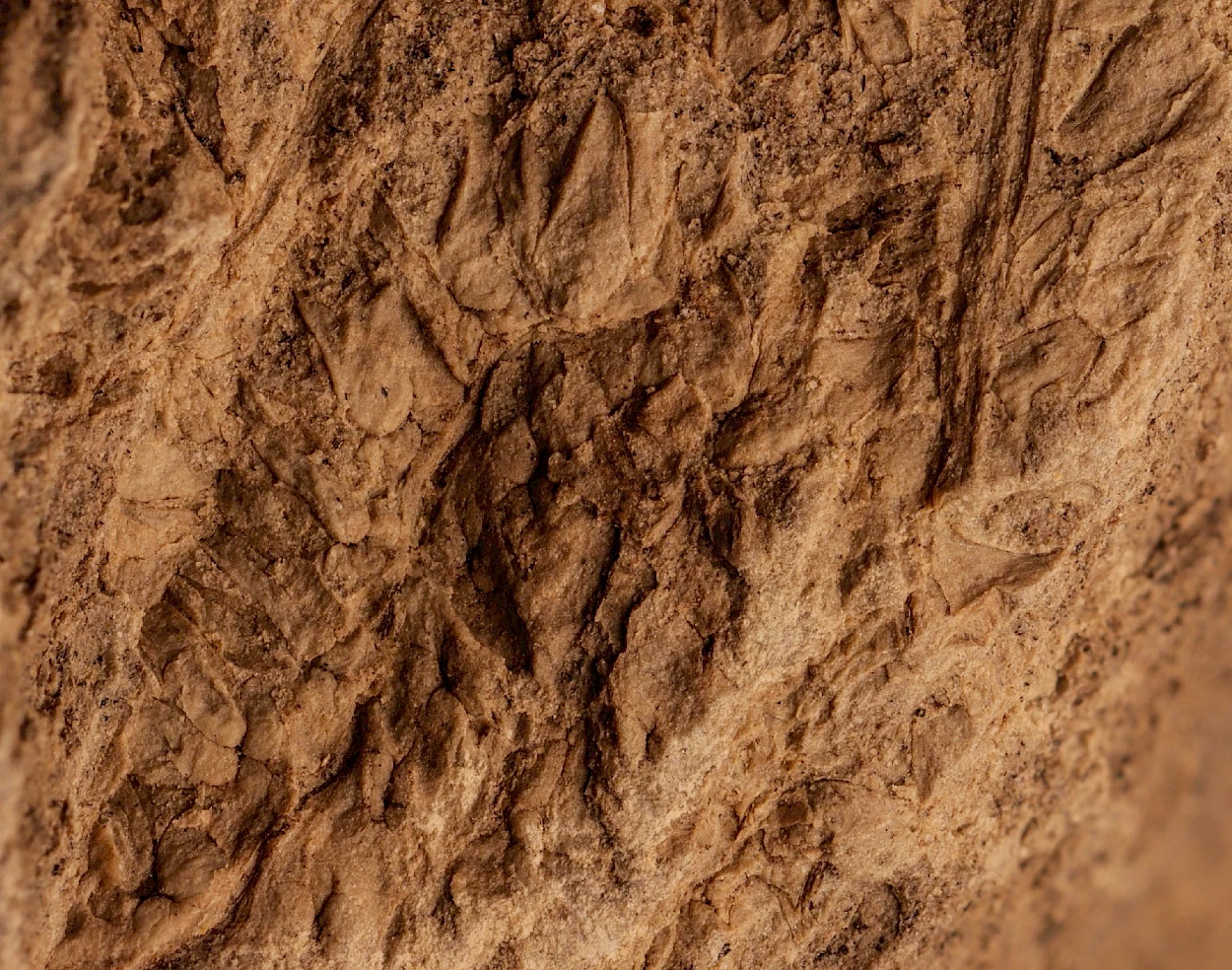UC scientists discover new 300-million-year-old extinct fern species
The fossil plant was found in the geological formations of the Anadia region, Aveiro.
A team of researchers from the Geosciences Centre (CGEO) of the Faculty of Sciences and Technology of the University of Coimbra (FCTUC) has discovered a new fern fossil species dating back 300 million years.
The fossil plant, found in the geological formations of the Anadia region, Aveiro, belongs to an extinct primitive fern. This new palaeontological discovery has been published in the journal Review of Palaeobotany and Palynology.
"This palaeobotanical discovery pertains to a new species of the genus Acitheca, a group of arboreal ferns from the now-extinct family Psaroniaceae (Marattiales), characterised by their elongated sporangia and sessile synangia," explains Pedro Correia, a researcher at the CGEO and first author of the scientific article.
The new species, Acitheca machadoi, was named in honour of Gil Machado, a geologist who specialised in Palaeozoic palynology and extensively studied both stratigraphy (a branch of geology focusing on rock layers) and palynological floras of the Carboniferous Buçaco Basin, including the stratigraphic section where the new fossil was discovered.
The Acitheca machadoi has exceptionally well-preserved sporangia with spores in situ. 'This is an extraordinary level of preservation, which is rarely found in adpressions (a type of fossilisation by compression) where plant fossils from the Carboniferous of this region are preserved,' says the palaeontologist, adding that this fossil represents one of the smallest sporangia documented for the genus Acitheca.
Sofia Pereira, a researcher at the CGEO and co-author of the study, believes that the reduced size of the sporangia is likely an adaptation to the drier conditions of the Carboniferous period. 'In fact, this is one of the most 'selected' adaptations in plants to cope with conditions of low water availability, enabling them to conserve water, increase energy efficiency, and facilitate spore release,' she points out.
'Although palaeontology is still awaiting the next pieces of the puzzle, the fossil plant assemblages of the Buçaco Carboniferous Basin already show several signs of the transition from humid to dry conditions, reflecting the global climate change that began at the transition from the Carboniferous to the Permian, marking the end of the Palaeozoic,' the researchers conclude.
Despite having relatively low global diversity, with fewer than ten known species, Acitheca machadoi is the third species to be discovered in Portugal, which suggests that its worldwide diversity may be underestimated.
The scientific article “A new species of Acitheca (Psaroniaceae, Marattiales) with exceptionally and three-dimensionally preserved sporangia from the Buçaco Carboniferous Basin, western central Portugal” is available here.
Translatioin: Diana Taborda

